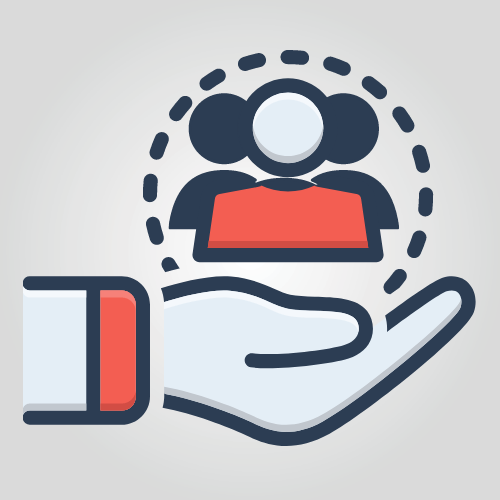News
Key Provisions in American Rescue Plan: Summary for Human Services Organizations
On Jan. 14, President-Elect Joe Biden and Vice President-Elect Kamala Harris unveiled their American Rescue Plan. This proposal has a price tag of $1.9 trillion and aims to build off of some of the investments in the end-of-the year package that became law in late December. This initial proposal did not include legislative language, so some details still aren’t clear. Ultimately, it will be up to the new Congress to review and pass legislation. They will likely put their own stamp on it, with some changes and additions of other programs and funding. The biggest obstacle to passage will be the United States Senate, which has a 50-50 split, with a tie-breaking vote by VP-Elect Harris. Senate Democrats are considering a process, called budget reconciliation, that would allow them to pass such a bill with a simple majority. We anticipate the process of passing this bill will take several weeks or months, with no guarantees.
Some of the key provisions impacting our network include:
- A $350 billion investment in state, local, and territorial governments to help them keep services afloat;
- Provides an additional $40 billion, on top of the $10 billion provided in the end of the year package, to total $50 billion in child care relief funding;
There are many other provisions to review in the below summary. The Alliance for Strong Families and Communities and the Council on Accreditation will continue to fight for additional relief funds for state and local government, loans, and grants for nonprofits of all sizes (including those with more than 500 employees), an increase in the FMAP Medicaid match, and other key priorities in as this process unfolds in early 2021.
State/Local Aid
- $350 billion in emergency funding for state, local, and territorial governments to ensure that they can keep front line public workers on the job and paid, while also effectively distributing the vaccine, scaling testing, reopening schools, and maintaining other vital services.
Financial Relief for Nonprofits
- Grants to hardest hit small businesses (not clear if nonprofits are included in this program, didn’t include details)
- Provides grants to more than one million of hardest hit small businesses. $15 billion in flexible, equitably distributed grants.
- Low-Interest Loans – $35 billion for state, local, tribal, and nonprofit small business financing programs to help generate $175 billion in low interest loans and venture capital to help entrepreneurs create and maintain jobs, build wealth, and provide essential goods and services. (did not say if nonprofits are eligible for these loans)
Hazard Pay
- No funding for hazard pay. Instead, the proposal calls on employers to take actions to provide frontline essential workers with back hazard pay.
Minimum Wage
- Raises the minimum wage to $15 per hour and ends the tipped minimum wage and the sub-minimum wage for people with disabilities.
Paid Leave
- Requires employers, regardless of size, to offer paid sick leave during the pandemic to workers.
- Parents and family members caring for sick relatives or out-of-school children could receive more than 14 weeks of paid sick and family leave.
- Plan would provide as much as $1,400 per week in tax credits to employers with fewer than 500 employees to reimburse them for the cost of paid leave. Tax credits will reimburse employers under 500 employees for 100 percent of the cost of the leave.
- Eliminates exemptions for employers with over 500 and less than 50 employees, so that they must offer leave.
- Provisions extended until September 30, 2021.
Child Tax Credit
- Expands child tax credits for low- and middle-income families and makes them refundable for 2021. Would expand the child tax credit to $3,000, from $2,000, for each child 17 and younger. Children under age six would be eligible for $3,600.
Child Care
- $25 billion emergency stabilization fund to help hard-hit child care providers, including family child care homes, to cover costs and operate safely.
- $15 billion for the Child Care and Development Block Grant program.
- Families will get back as a tax credit as much as half of their spending on child care for children under age 13, so that they can receive a total of up to $4,000 for one child or $8,000 for two or more children. The tax credit will be refundable, meaning that families who don’t owe a lot in taxes will still benefit. The full 50 percent reimbursement will be available to families making less than $125,000 a year.
Earned Income TaxCredit (EITC)
- Raises the maximum Earned Income Tax Credit for childless adults from roughly $530 to close to $1,500, raises the income limit for the credit from about $16,000 to about $21,000, and expands the age range that is eligible, including by eliminating the age cap for older workers so that older workers can claim the credit.
School Funding
- Education Stabilization – $130 billion
- Provide resources to support schools safely reopening. Funds can be used for reduced class size, modifying spaces for social distancing, improved ventilation, hiring more janitors, PPE for staff, ensuring schools have accesses to a nurse, etc.
- Districts must ensure that funds are also used to meet students’ academic, mental health, and social and emotional needs in responses to COVID-19. Examples include extended learning time, tutoring, and counselors.
- Funding can be used to prevent cuts to state pre-k programs.
- A portion of funding can be used for a COVID-19 Educational Equity Challenge Grant, which will support state, local, and tribal governments in partnering with teachers, parents, and other stakeholders to advance equity – and evidence-based policies to respond to COVID-related educational challenges, give all students the support they need.
Nutrition Assistance
- Extends the 15 percent Supplemental Nutrition Assistance Program (SNAP) benefit increase through September 2021. Temporarily cuts the state match.
- Invests $3 billion for the Special Supplemental Nutrition Program for Women, Infants, and Children.
Direct Payments (Stimulus Checks)
- Gives families a $1,400 per-person check, in addition to the $600 stimulus checks provided to families in December, for a total of $2,000.
Unemployment Insurance
- Extends and expands unemployment insurance benefits, including a $400 per-week unemployment insurance supplement. Proposes extending emergency unemployment insurance programs through September 2021, allowing workers not traditionally included in the unemployment insurance program to participate.
Rental and Housing Assistance
- Extends the eviction and foreclosure moratoriums and continues applications for forbearance on federally-guaranteed mortgages until Sept. 30, 2021.
- $30 billion in rental and critical energy and water assistance, including $5 billion to cover home energy and water costs and arrears through programs like the Low-Income Home Energy Assistance Program.
- $5 billion in emergency assistance to help secure housing for people experiencing or at risk of homelessness.
Temporary Assistance for Needy Families (TANF)
- $1 billion for states to cover additional cash assistance that Temporary Assistance to Needy Families (TANF) recipients needed as a result of the pandemic crisis.
Behavioral Health
- $4 billion to enable the Substance Abuse and Mental Health Services Administration and the Health Resources and Services Administration.
Healthcare Coverage
- President-elect Biden is calling on Congress to subsidize continuation health coverage (COBRA) through the end of September 2021. He is also asking Congress to expand and increase the value of the Premium Tax Credit so that families don’t pay more than 8.5 percent of their income for coverage.
Community Health Worker Workforce
- Funding for 100,000 public health workers, nearly tripling the country’s community health worker workforce. These individuals will be hired to work in their local communities to perform vital tasks like vaccine outreach and contact tracing in the near term, and to transition into community health roles to build our long-term public health capacity that will help improve quality of care and reduce hospitalization for low-income and underserved communities.


